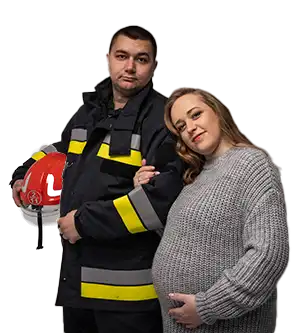
Military Firefighters Use Adjustments To Training And Operational Protocols As They Adopt Non-Toxic Foam Alternatives
Because fluorine-free foams differ from typical AFFF in their chemical makeup and application methods, military firefighters need to receive updated training
Monday, April 22, 2024 - As military firefighting stations switch from conventional aqueous film-forming foam (AFFF) to non-toxic, fluorine-free substitutes, extensive modifications to operating procedures and training materials are required. The unique chemical characteristics and application methods needed for fluorine-free foams force this change. Conventional AFFF functions by creating a barrier that suffocates the fire and keeps oxygen from feeding the flames. It is well-known for its efficiency in swiftly putting out fuel fires. To accomplish the same level of fire suppression, fluorine-free foams, on the other hand, may operate on a different basis and may need more accurate application procedures. This change means that in order to employ foam products efficiently, firefighters not only need to learn new deployment techniques, but they also need to comprehend the underlying chemical reactions of these new chemicals. As a result, there are major changes being made to military firefighters' training programs to include the knowledge and abilities required for the new firefighting foams. These training sessions now contain thorough descriptions of the variations in foam properties, emphasizing elements like spread rate, viscosity, and cooling impacts. In order to assist firemen in mastering the application procedures required by fluorine-free foams, practical training exercises are also being developed. For example, nozzle handling methods and foam layering strategies for fuel fires must be modified from AFFF methods. Because fluorine-free foams behave differently from regular foams under various conditions, these practical training sessions are essential to guaranteeing that firemen can adapt their tactics in real-time settings.
In addition, military firefighting stations are updating their operational protocols to take into account the limitations and capabilities of fluorine-free foams. This includes updating the standard operating procedures (SOPs) that specify how to handle different kinds of fires, such as structural and aircraft fires. Particular recommendations for choosing foam in accordance with the fire scenario, necessary foam quantities, and ideal application rates are now included in the SOPs. By keeping these procedures up to date, you can make sure that everyone working in the fire department knows how to use non-toxic foams as effectively as possible while reducing any potential negative effects on the environment. Lastly, the use of non-toxic foams necessitates improvements in the upkeep and handling of firefighting apparatus. Regular inspections and maintenance schedules are being modified to minimize equipment degradation or failure because fluorine-free foams may interact differently with materials used in firefighting tools and gear. In order to ensure lifespan and dependability, fire stations are investing in new storage and distribution methods that are compatible with chemically distinct fluorine-free foams. These logistical changes guarantee that the firefighting personnel are equipped and ready to go in the event of a fire, allowing them to carry out their tasks in a safe and efficient manner.
The previously mentioned article provides basic information regarding military protocols, environmental issues related to firefighting foam, and firefighting techniques. If you would want further information about this topic, you may find the websites and other resources listed below to be useful: The United States Environmental Protection Agency (EPA) - They usually include information on environmental safety as well as regulations on dangerous substances like PFAS and their alternatives. For information on modifications to laws and particular military environmental policies, one could consult the Department of Defense's (DoD) Environment, Safety, and Occupational Health Network and Information Exchange (DENIX). Information about the different types of foams used to fight fires, their impact on the environment, and developments in foam technology can be found at the Firefighting Foam Coalition (FFFC).
 OnderLaw, LLC and The Overholt Law Firm, PC -
OnderLaw, LLC and The Overholt Law Firm, PC -